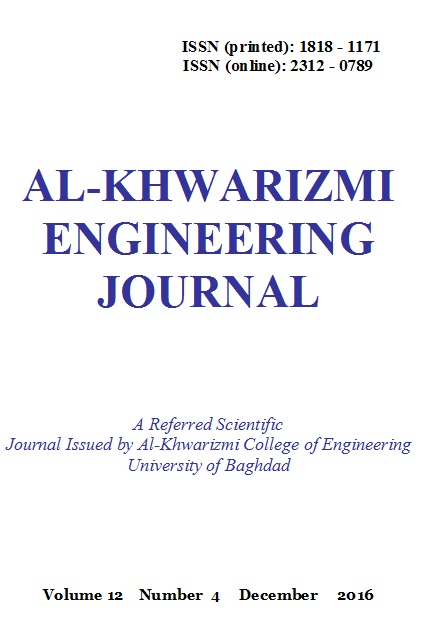Conversion of Lignocellulosic Material Into Fermentable Sugars
DOI:
https://doi.org/10.22153/kej.2016.05.006Keywords:
lime pretreatment, enzymatic hydrolysis, lignocellulosic biomass, willow woodAbstract
Enzymatic hydrolysis process of lignocellulosic biomass materials is difficult because of inherent structural features of biomass, which represents barriers that prevent complete hydrolysis; therefore, pretreatment techniques are necessary to render biomass highly digestible in enzymatic hydrolysis process. In this research, (non?) oxidative short-term lime pretreatment of willow wood was used. A weight of 11.40 g of willow wood was mixed with an excess of calcium hydroxide (0.4 g Ca(OH)2/g raw biomass) and water loading (15 g/g raw biomass). Lime pretreatment was carried out for various periods of time including 1, 2, 3.5, 5 and 6 h, with temperatures at 100, 113, 130, 147 and 1600C, and oxygen pressures as oxidativeagent (6, 9, 13.5, 17.8, 21 bar absolute). The optimization of both pretreatment and enzymatic hydrolysis were depended on the maximum overall yields of glucan and xylan after two processes of lime pretreatment and enzymatic hydrolysis. The optimal conditions of pretreatment were as follow: 1) 1.33 h, 1470C, 17.8 bar absolute, 0.26 g Ca(OH)2/g raw biomass. 2) 1.25 h, 155 0C, 21 bar absolute, 0.26 Ca(OH)2/g raw biomass. Furthermore, the optimal values for low impact factors such as water loading was 15 g/g raw biomass and particle size was less than 3 mm. The optimal conditions of enzymatic hydrolysis were as follow: Cellulase enzymeloading was 0.1 g /g glucan in raw biomass, at substrate concentration of 50 g/L during 72 h of enzymatic hydrolysis The yield of enzymatic hydrolysis under these conditions were as follow: 96.00 g glucan/100 g of glucan in raw biomass, and 65.00 g xylan/100 g xylan in raw biomass.
Downloads
Downloads
Published
Issue
Section
License
Copyright: Open Access authors retain the copyrights of their papers, and all open access articles are distributed under the terms of the Creative Commons Attribution License, which permits unrestricted use, distribution, and reproduction in any medium, provided that the original work is properly cited. The use of general descriptive names, trade names, trademarks, and so forth in this publication, even if not specifically identified, does not imply that these names are not protected by the relevant laws and regulations. While the advice and information in this journal are believed to be true and accurate on the date of its going to press, neither the authors, the editors, nor the publisher can accept any legal responsibility for any errors or omissions that may be made. The publisher makes no warranty, express or implied, with respect to the material contained herein.
















